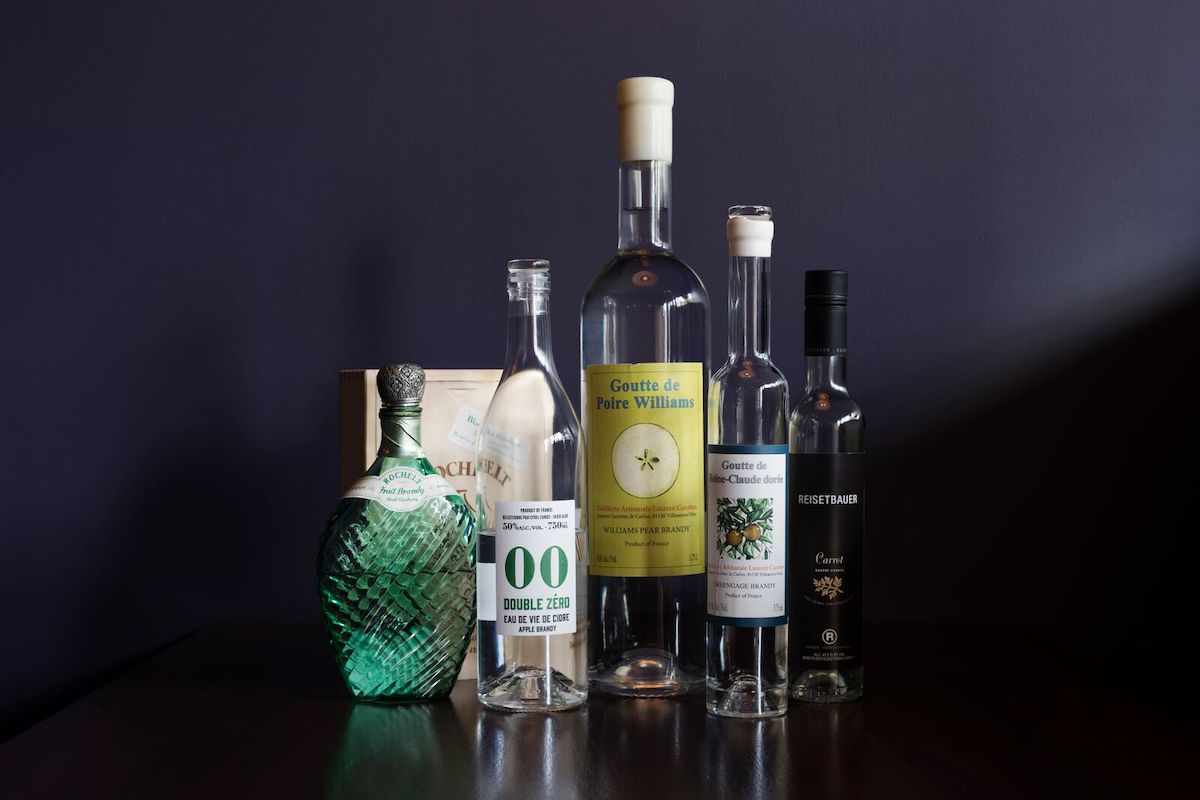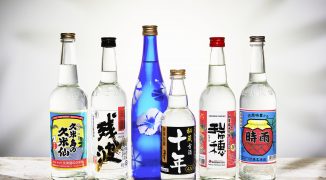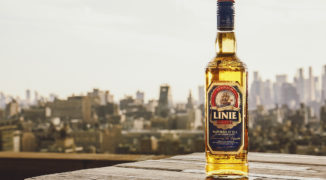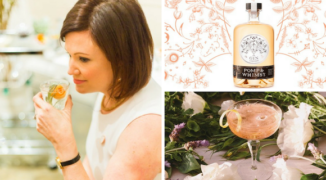City dwellers in Chicago like to experience summer with a certain intensity — drinking in the fleeting summer and sunshine on restaurant patios with cold drinks. But while many are reaching for rosé, guests at my home restaurant Income Tax, a wine-focused neighborhood restaurant on the city’s far north side, now reach for eau de vie.
What’s Eau de Vie?
Though still relatively obscure in America, eau de vie is a colorless, double-distilled brandy fermented from fruit that spans from pear and apricot to elderberry and carrots. In contrast to its more commonly appreciated brandy counterpart that is distilled from grapes, eau de vie is a clear fruit spirit that never sees oak casks.

How It’s Made
Making eau de vie is a European tradition that at its best reminds me of wine production in its traceable terroir. Crafted from some of the world’s more flavorful fruits, eau de vie necessitates a large quantity of fresh fruit for each abbreviated batch. My preferred producers process the fruit ingredients by hand before distilling the beverage into a disproportionately small (and delicious) liquid yield. This care and nearly absurd usage of these abundant fruits amplifies the spirit’s bright and vivid fruit flavors to parallel summer’s own extremes.
How It’s Served
Classically, eau de vie is served neat in a small fluted glass and enjoyed post-meal. At Income Tax, we treat our select eau de vies as high-end sipping spirits that we’ve found bring forward the best flavors of the product they are derived from.
We employ the spirit in a few different contexts at the restaurant, including a spin on the classic rhum agricole Ti’ Punch, mixing eau de vie made from apples in Normandy, France with sugarcane and lime. Similarly at home, I mix a simple highball with eau de vie and sparkling water, making sure both liquids are as cold as possible to create a refreshing long drink.
Our beverage program favors a handful of small producers known for exceptionally pure spirits. We currently include eight selections in the eau de vie category from five producers, making it one of the city’s most ambitious lineups of this unique spirit.
Might I Recommend…
Laurent Cazottes is one of the most notable eau de vie producers carried at Income Tax. Based in Southern France, this artisan farmer picks the fruit for his craft eau de vie fruit by hand, removing the seeds and stems before aging it for a month to concentrate the sugars. Why all the trouble? The difference in taste brings to mind the disparity between biting into a ripe peach picked from an orchard tree and eating the fruit from a can. His Goutte de Reine-Claude Dorée eau de vie made from greengage plums may be my favorite spirit in the world of any category. We currently serve it out of magnum 1.75 liter bottles at Income Tax for extra fun.
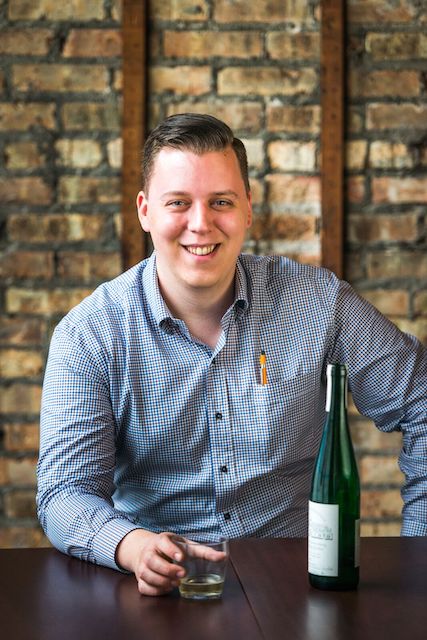
Another of Income Tax’s specialty varieties on hand is premium Austrian distillery Rochelt, which ages each batch of its elderberry-based eau de vie for 13 years in glass demi-johns (balloons) before it’s ready for market. Because Rochelt works with dozens of fruit growers, they have the leverage to refuse all but the top of the crop in creating a remarkable eau de vie well worth the wait.
Though it’s easy to fixate on the drink’s often meticulous production methods, the unique part of eau de vie is that, though the spirits exist year round, each batch captures its own harvest season and place. It’s the flavor of a moment in time, almost like bottling one bountiful growing season. With late summer’s harvest season on the horizon, for anyone interested in crisp terroir-driven fruit nuances, it can be a beautiful rabbit hole to go down.


